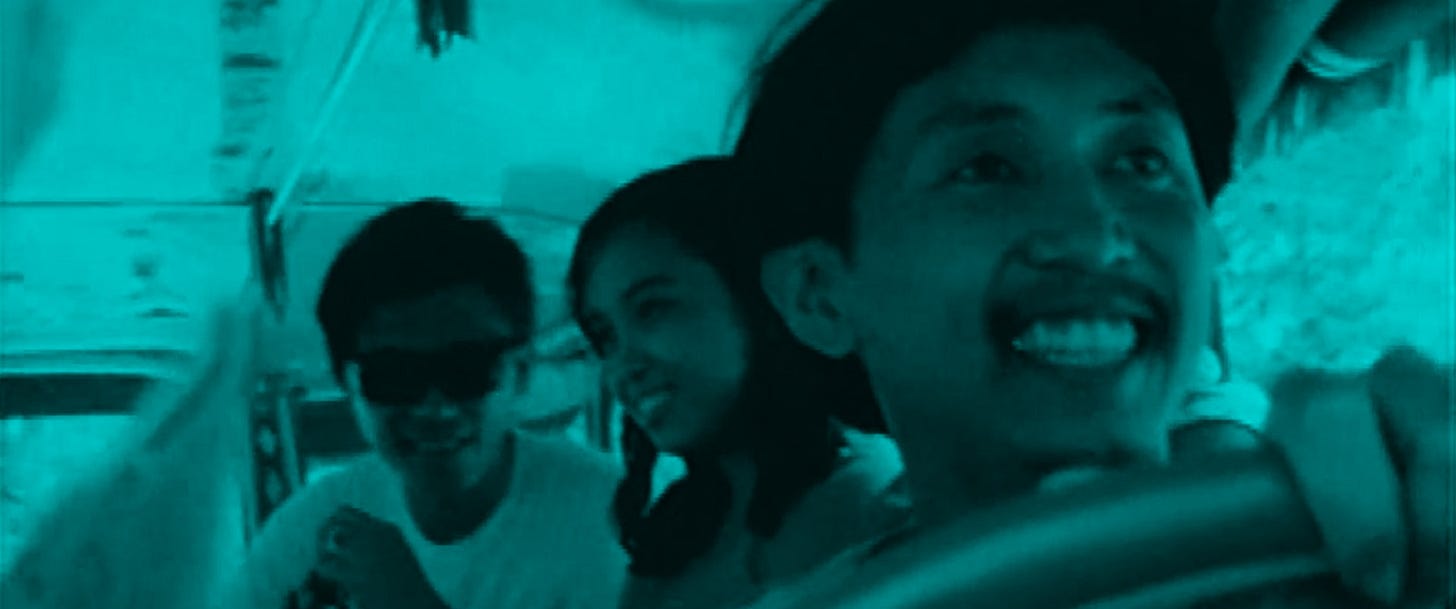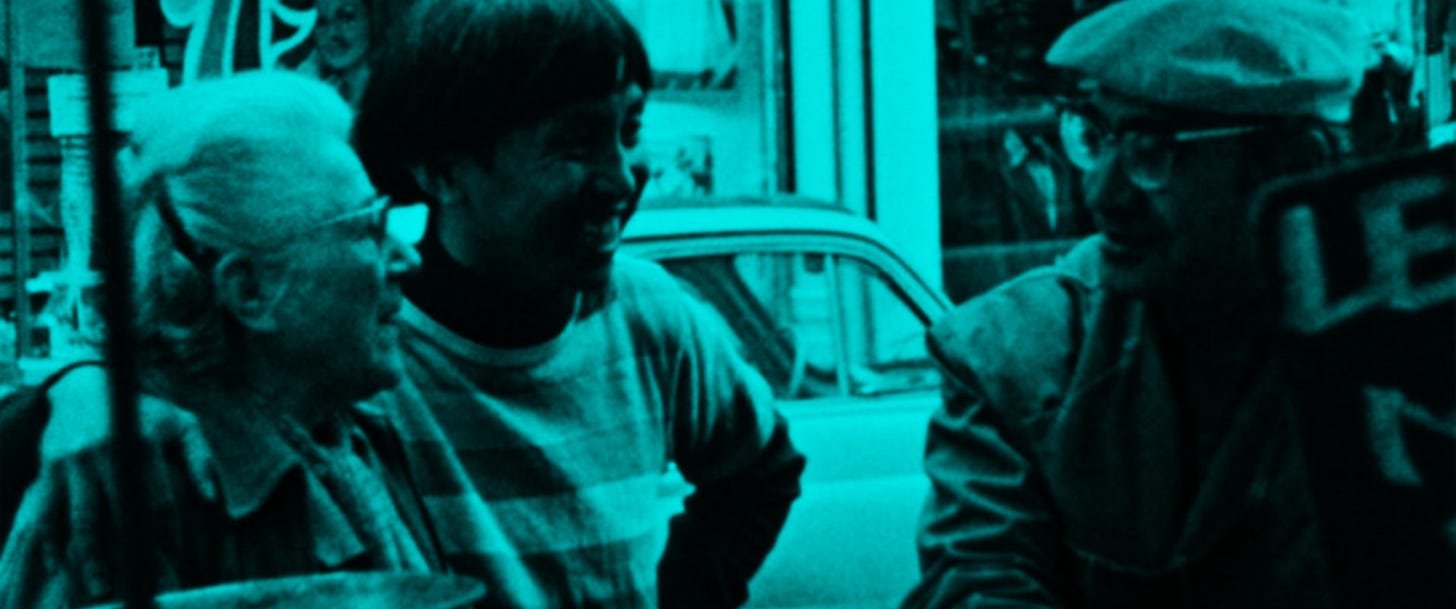Mababangong Bangungot of Progress and Modernity
The first of Kidlat Tahimik's radical, "imperfect", and important films
The 1977 avant-garde film Mababangong Bangungot (Perfumed Nightmare) tells the coming-of-age tale of a naive jeepney driver allured to the modernity and progress of the West like a moth—or in this case, a butterfly—to a flame. As he reaches his childhood dream when he finally sets foot on the “paradise,” disillusionment wakes him up in the perfumed nightmare of soulless and unfamiliar land of neocolonialism and destruction.
In the first part of the film, we learned the charming fascination of the hero with Western culture; he’s an avid listener of the radio station Voice of America, an admirer of foreign beauty queens, and the founder-leader of a fan club named after the German-American rocket pioneer Werner von Braun. On one hand, this admiration is tainted with naivety. For example, he obsesses with rockets and Werner von Braun without knowing the Nazi contribution of the latter and the destructiveness of his invention. On the other hand, this enchantment shows his low regard of the cultures of his indigenous community. But this innocence will later be revisited and reevaluated once he finally sees the actualities of the First World.
With the help of Big Boss, the American businessman, Kidlat was one of the few in his village to ride an airplane and travel abroad. In this second part of the film, we see his excitement and surprise… but not for long. His transformative rumination started when he learned about the double-yolk eggs he bought from lola, the street vendor. He then started wondering about the necessity of the super infrastructures and later on the sentimentality of the old over the new. Although this transition is gradual, what becomes the product in the end is his revolutionary consciousness—the realization that he is and must remain independent. Thus, the recurring line, “When the typhoon blows off its cocoon, the butterfly embraces the sun” means he needs to free himself from the cocoon of First World charms he finds himself trapped in to appreciate the world that makes him significant. This whole metamorphosis is radical and emancipatory.
The liberation of Kidlat from his colonial mentality is comparable to the experience of the auteur, Kidlat Tahimik, who personally played the “fictionalized” character. Tahimik, with his bourgeois origins, spent most of his education and early career in the West, but as son of Baguio, it’s the realization of what he calls indio-genius that ultimately made him take the camera and embrace its artistry. His debut film, Mababangong Bangungot, can be understood as a semi-autobiography that alludes to Tahimik’s rebellious stand against the aspect of his life that is elite and Americanized. Further so that this critical spirit in him manifests in his filmmaking style and process. The themes and aesthetics of his “imperfect” films confront the dominant cinematic language and images produced by First and Second Cinema.
Mababangong Bangungot, for example, is made similarly to how Tahimik built and designed his ark-like cinematheque in Baguio; no script, no blueprint. The film is a tagpi-tagpi of seemingly mundane moments weaved together by the auteur’s introspection and thereby producing an idiosyncratic work of art. Tahimik’s cinematic language is a prime example of the psychology and science behind the so-called Kuleshov effect where putting seemingly unrelated pictures in order somehow makes sense by juxtaposition and inference.
Moreover, Mababangong Bangungot deviates from the dominant filmic production of the West that historically exoticizes third world cultures with condescension. The film brazenly shows the people of Balian (bal-yan) and their ways of living—from transportation, architecture, religion, celebration to circumcision. The cunning beauty and intelligence of this heritage are weighed against the stunning yet callous nature of capitalism. The metaphor used was Kaya’s description of the white carabao: rare (against nature), superficially beautiful but cold and aggressive inside.
Aside from the appropriation of the jeep as a vehicle of war to a vehicle of living as well as the semantic irony of the name Kidlat Tahimik, there are other comparisons and contradictions in the film. Notice how Tahimik plays the audio of a space rocket taking off in the background while showing static pictures of life in Balian. This raises the question, how is setting foot on the moon relevant to their non-modern indigenous lives? How will such historic space travel supposed to alleviate the struggles of Third World communities? Hence, the mockery, “That’s one small step for man, one giant leap for monkey-nd.” This is not far from the cruel large scale of the supermarkets and superchimneys at the expense of small businesses, and in his village, the cutting down of trees to make way for the construction of concrete highways for tourists. Ultimately, when he feels becoming smaller from the gaze of the visiting big personalities, the sleeping butterfly in him awakens and declares, “I am Kidlat Tahimik. I am not as small as you think. Nothing can stop me from crossing my bridge.”
Bridges are a significant motif in the film.
It’s the 3-meters-wide-10-meters-long bridge in his village,
the radio that connects Kidlat with his American dreams,
the escalators,
the wooden carved horse that links him with his father,
his jeepney that transports people to places,
the “primitive” circumcision that he has to go through to become a man,
the metaphorical development that joins the Earth with the moon,
or the one that delivers Kidlat to Western countries.
Most especially, the bridge that Kidlat crosses finding his place in a world where tradition and modernity, quiet and lightning intersect.
On one end are the native customs and values and at the opposite are progress and modern technology. The film resolves this conundrum by choosing the former, radical against the usual Western view of First and Second Cinema. In his Last Will and Testament and Declaration of Independence, Kidlat Tahimik—both the character and the auteur—declares himself independent from those who would build bridges to the stars. He learns that his strength is in his own choosing of vehicle and bridge. In other words, the sleeping butterfly awakens and learns to blow again, and finally, embraces the sun.







